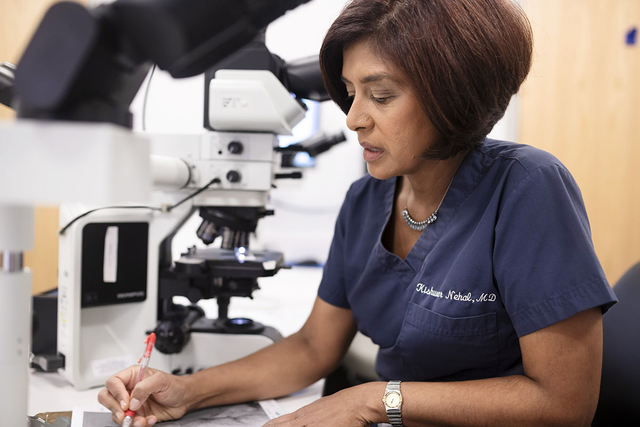
Lentigo maligna (LM) and lentigo maligna melanoma (LMM) are types of skin cancer. They begin when the melanocytes in the skin grow out of control and form tumors. Melanocytes are the cells responsible for making melanin, the pigment that determines the color of the skin.
LM refers to the early stage of the disease, when the cancer is confined to the top layer of skin. LMM refers to the disease after it has grown deeper into the skin and is considered invasive. Together, LM and LMM account for about 4 to 15 percent of the melanomas diagnosed worldwide.
LM and LMM usually form on the face, ears, or neck of elderly people with sun-damaged skin. They often cause a blotchy appearance. These forms of skin cancer usually take a long time to spread. For those reasons, LM and LMM are often confused for benign skin damage caused by the sun.
Diagnosis and Treatment of Lentigo Maligna Melanoma
LM and LMM are highly curable when diagnosed early. The goals of treatment are to:
- cure the cancer
- preserve the appearance of your skin
- prevent the cancer from coming back
The extent and depth of the melanoma guides your care plan.
At MSK, treatment often begins with a consultation with one of our dermatologic surgeons. Our dermatologic surgeons are among the most experienced in the world at treating LM and LMM. We wrote the first and only book on how to manage the disease and are highly skilled in surgical approaches to remove it.
We also work closely with an entire team of highly experienced skin cancer experts so that you get the right diagnosis and we put together the best possible treatment plan for you.
Additionally, people who come to MSK for treatment may benefit from a noninvasive technology called reflectance confocal microscopy. This kind of imaging maps out the affected skin in precise detail without the need for additional biopsies. This approach is particularly beneficial for people with LM or LMM because the borders of those cancers are often difficult to discern. This technique allows doctors to remove the cancer completely while achieving the best possible cosmetic outcome.

